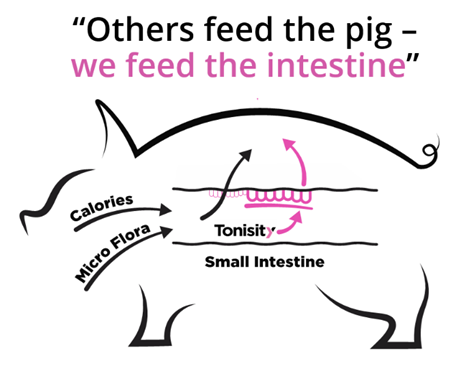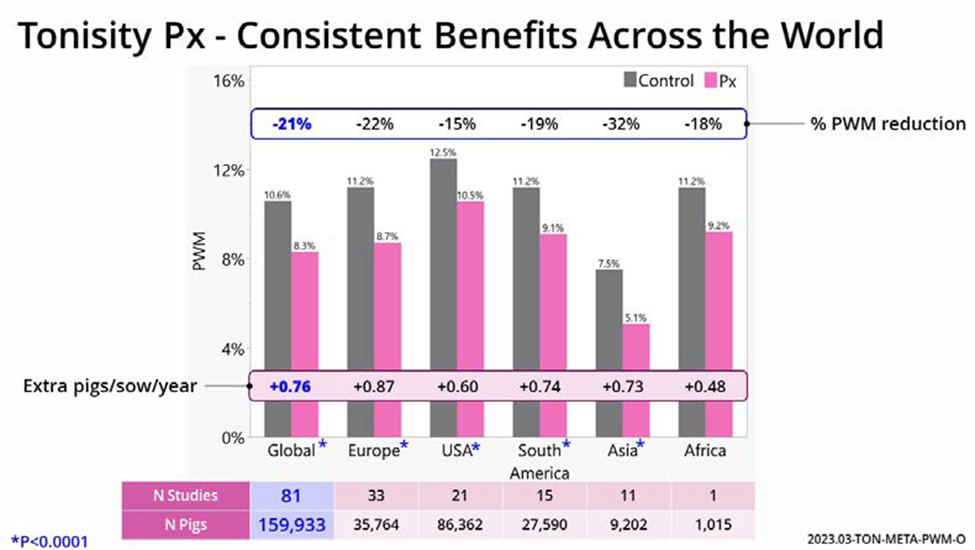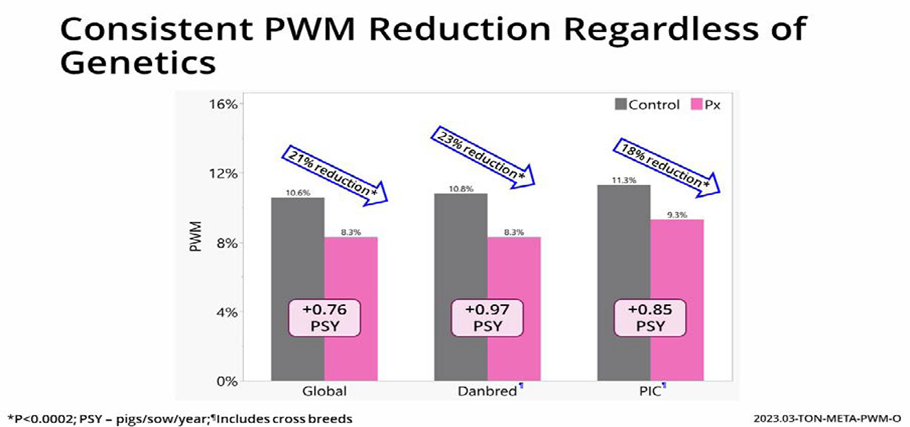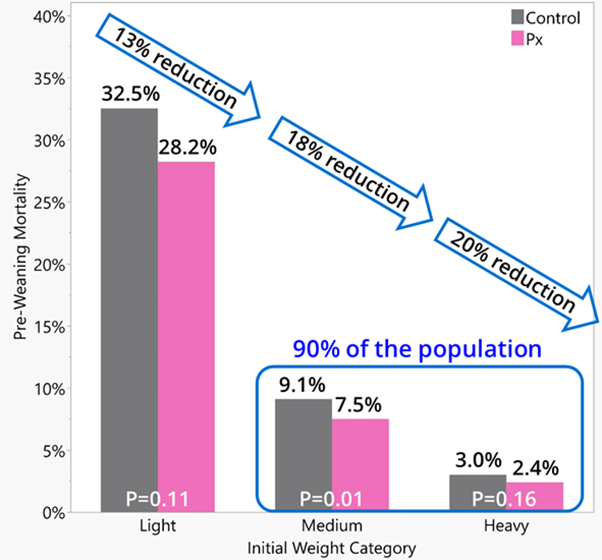
Pre-weaning mortality (PWM) is a major concern for both animal welfare and productivity in the global pig farming industry. Sows are becoming more prolific but despite various improvements in disease management, facility design, and overall piglet care, the number of piglet deaths before weaning is still increasing. That is, on farms not using Tonisity Px.
Tonisity’s Unique Solution to Reduce PWM
Tonisity Px is the first isotonic protein drink, designed to be administered to piglets from day two of life, that contains no GMOs, no blood plasma products, no complex artificial chemicals or no antibiotics.

Enterocytes are intestinal cells that play a crucial role in the growth and wellbeing of piglets. These cells line the villi of the small intestine and play an essential role in the absorption of macronutrients, allowing animals to build new cells and tissues. Enterocytes can absorb many nutrients simultaneously but can only manage them in small sizes. If a piglet does not receive enough nutrients and immunoglobulins from the colostrum, this shortage in nutrients rapidly results in an atrophy of the intestinal villi causing the absorptive capacity of the small intestine to be drastically reduced. This explains the increased predisposition of pigs to diarrhea and growth checks in the post-weaning period. The lack of nutrients in the intestine can also lead to interruption of the barrier functions of the digestive tract, resulting in gut atrophy, luminal starvation, bacterial translocation and impaired immune functions.
Tonisity’s patented novel technology took the original basics of electrolyte and hydration physiology and then combined it with the area of intestinal physiology, specifically asking, what do these highly specialised cells need to work most efficiently? For this reason, Tonisity products all contain specific nutrients feeding the intestinal cells, associated with the right combination of electrolytes.
Recently, Tonisity updated its Tonisity Px PWM meta-analysis, increasing the number of trials included to 81. The results were significant, showing an average 21% reduction in PWM globally!
The graph below breaks down the analysed studies by continent and illustrates some of the statistics from the trials that occurred in countries in those regions. An important factor to pay attention to is the PWM reduction and how mortality has been reduced at similar rates across various geographical areas.

Interestingly, despite various genetics on farms, Tonisity Px still had a fairly uniform effect on PWM reduction amongst all genetic lines.

Mortality Reduction Regardless of Birth Weight Category

67% of piglets rescued with Tonisity Px were medium or heavy at birth
The use of Tonisity Px from days two to eight is shown to reduce pre-weaning mortality across all birthweights. It is not just the light birthweight pigs that benefit from early enteral nutrition. Pigs across all birthweights benefit from it. In other studies, pigs fed Tonisity Px also demonstrated a clear shift to heavier finishing weights compared to controls, again regardless of their birth weight.
In summary, improvements in genetic selection and sow management has allowed an average extra 0.2 piglet per litter to be produced year-on-year. However, that increase in litter size is usually associated with reduced weight at birth, increased pre-weaning mortality (PWM), and reduced growth post-weaning; all of which have a negative impact on the economic performance of the farm. Tonisity Px achieves a 21% PWM reduction regardless of geographical region, genetics and birth weight category.
This results in significant, measurable benefits: on average, 0.76 extra piglets/sow/year, or 23 extra piglets/1,000 born.

